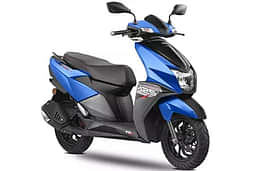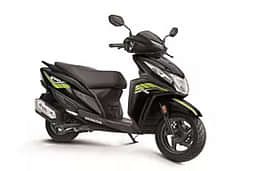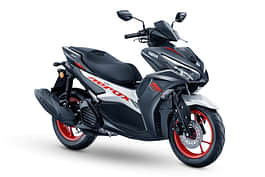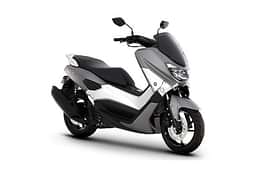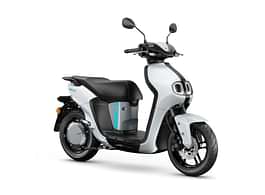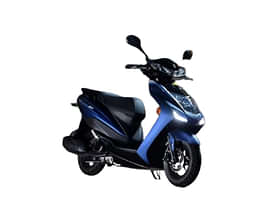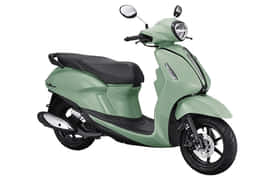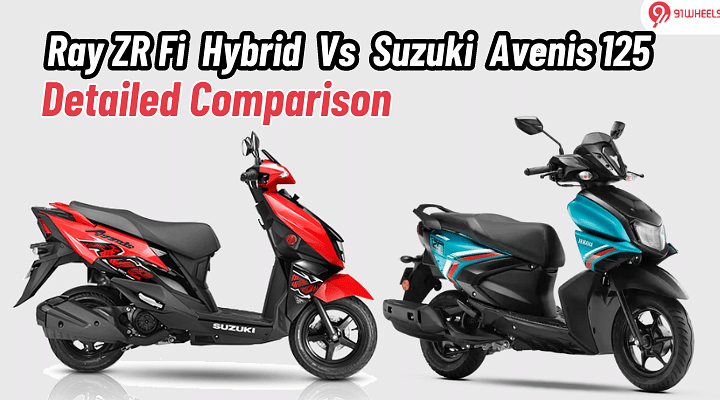
KEY HIGHLIGHTS
- Yamaha Ray ZR 125 has higher torque output.
- Suzuki Avenis 125 offers slightly more power.
- Ray ZR 125 features optional disc brakes.
- Both scooters have LED headlamps and digital clusters.
- Avenis 125 includes external fuel filling cap.
The 125cc segment is the most competitive category in the scooter market in India. This category has some major players such as the Yamaha Ray ZR 125, Suzuki Avenis and the TVS Ntorq, all of which offer similar features and performance with slight differences in specifications. In this scenario, a buyer is confused between the available options. If you are also facing the same dilemma, this article is for you. Today, I'll be comparing the two most stylish and value-for-money scooters in the 125cc category- the Yamaha Ray ZR 125 and the Suzuki Avenis. Before moving ahead, join our 91Wheels WhatsApp Community to stay updated on the latest automotive news.
Read more: Bajaj Pulsar N160 Vs NS160: What's More You Get With the NS
Yamaha Ray ZR 125 Vs Suzuki Avenis 125: Engine

| Feature | Yamaha Ray ZR 125 | Suzuki Avenis |
|---|---|---|
| Engine Type | Air-cooled, 4-stroke, SOHC, 2-valve | Air-cooled, 4-stroke, SOHC, 2-valve |
| Displacement | 125 cc | 124 cc |
| Max Power | 8.2 PS @ 6500 rpm | 8.7 PS @ 6750 rpm |
| Max Torque | 10.3 Nm @ 5000 rpm | 10 Nm @ 5500 rpm |
| Fuel System | Fuel Injection | Fuel Injection |
| Transmission | CVT | CVT |
| Start Type | Electric & Kick | Electric & Kick |
| Mileage (claimed) | 58 kmpl* | 54 kmpl* |
The Yamaha Ray ZR 125 sources its power from a 125cc air-cooled engine which is capable of producing 8.2 PS of power and 10.3 Nm of torque. The powerhouse on offer is a similar unit that the brand also utilizes for the Fascino 125 Fi Hybrid. The Suzuki Avenis on the other hand features a 124.3cc air-cooled engine that produces slightly higher power - 8.7 PS of power and 10 Nm of torque.
Winner: Even with a lesser engine displacement, the Suzuki Avenis 125 manages to generate higher power while the torque is higher on the Ray ZR 125. While the Ray ZR 125 provides better initial torque, the Aventis proves itself in the higher RPMs. I would say that there is no clear winner among these in terms of power.
Yamaha Ray ZR 125 Vs Suzuki Avenis 125: Hardware

The Yamaha Ray ZR Fi Hybrid features telescopic front forks and a mono-shock on the rear. The braking duties are handled by 130mm drum brakes on both wheels in the lower variant while the disc variant offers a 190mm disc at the front and the same drum brake at the rear. The scooter gets 12-inch (front) and 10-inch rear alloy wheels.
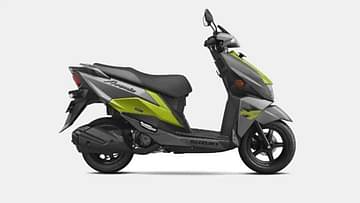
On the other hand, the Suzuki Avenis 125 also features telescopic front forks and a single shock absorber at the rear. There are 12-inch and 10-inch alloy wheels on the scooter. For braking, you get a combined braking system with the Avenis 125.
Winner: In terms of hardware setup, I found the Yamaha Ray ZR Fi Hybrid better than the Suzuki Avenis. It is majorly because the Rayzr offers disc brakes. There is no big difference on the other end as both scooters get identical suspension systems.
Yamaha Ray ZR 125 Vs Suzuki Avenis 125: Features
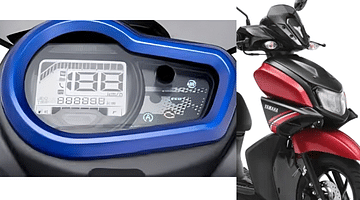
Available in two variants, the Yamaha Ray ZR offers a different set of features with each trim. The entry-level drum variant features a halogen headlamp and a conventional analogue instrument console while the higher disc variant gets modern features such as a full LED headlamp and a fully digital instrument cluster with Bluetooth connectivity, enabling features such as turn-by-turn navigation, SMS and Call alerts, malfunction reminder and maintenance recommendations. However, the. Y-shaped LED DRLs are offered as standard on both trims. Last but not least, the Ray ZR 125 boasts an impressive storage capacity of 21 litres.

On the other hand, the Suzuki Avenis also offers impressive amenities such as the LED headlamp and tail light, a full-digital instrument cluster, and a USB charging port. The fully digital instrument cluster supports Bluetooth connectivity and offers features such as call/sms alerts, overspeed alerts and battery indicators. From the utility point of view, the Avenis 125 comes with an external fuel filling cap which enhances the convenience of the rider.
Winner: On the features front, I would say that both scooters offer identical features including the digital instrument cluster. Avoiding the nit-picking, i would prefer to say that each one of these offers an impressive set of features at their price range.
Price Comparison
| Model | Variant | Colour Options | Price (Ex-showroom Delhi) |
|---|---|---|---|
| Yamaha Ray-ZR 125 Hybrid | Drum | Metallic Black, Cyan Blue, Matte Red | Rs 85,030 |
| Disc | Cyan Blue, Matte Red, Metallic Black | Rs 91,430 | |
| Disc | Racing Blue, Dark Matte Blue | Rs 92,430 | |
| Yamaha Monster Energy MotoGP Edition | Monster Energy MotoGP Edition design | Rs 92,930 | |
| Suzuki Avenis | Standard | Glossy Sparkle Black, Pearl Mira Red, Champion Yellow No 2, Glossy Sparkle Black Pearl Glacier White | Rs 92,000 |
| Race Edition | Metallic Triton Blue | Rs 92,800 |
Verdict
In the 125cc scooter segment, both the Yamaha Ray ZR 125 and Suzuki Avenis offer commendable features and performance. The Avenis edges out slightly in power, while the Ray ZR impresses with better braking hardware and storage capacity. Both scooters provide modern features and practicality, making the choice largely dependent on personal preferences for power versus hardware and utility.


